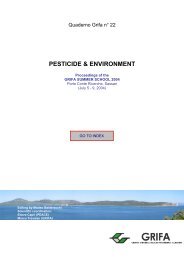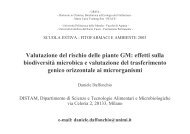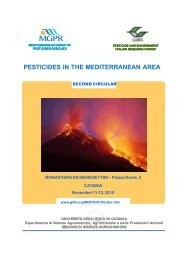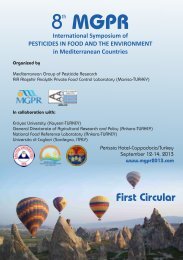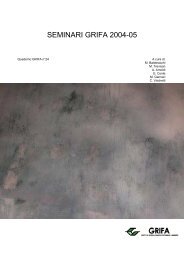International Congress BIOLOGICAL PRODUCTS - Gruppo di ...
International Congress BIOLOGICAL PRODUCTS - Gruppo di ...
International Congress BIOLOGICAL PRODUCTS - Gruppo di ...
Create successful ePaper yourself
Turn your PDF publications into a flip-book with our unique Google optimized e-Paper software.
Fig 3 – 4 Symptoms of phytotoxicity in field and in greenhouse.<br />
Discussion and conclusion<br />
When long leaf wetness periods combined with low or very high temperatures are frequent it is necessary to be very<br />
careful in using copper compounds, as copper peptidate. Copper peptidate, which could be useful to reduce the annual<br />
allowed copper amount per hectar, must be used only when grapevine is less sensible to copper phytotoxicity, avoi<strong>di</strong>ng<br />
application until the end of flowering. Copper peptidate repeated treatments whithout periods of rains increase the risk<br />
of phytotoxicity. In this case could be useful to reduce dosages in the following treatments.<br />
Acknowledgements<br />
This work was funded by the Italian Ministry of Agriculture (MiPAF), research project “La <strong>di</strong>fesa delle colture in<br />
agricoltura biologica”.<br />
References<br />
I. Pertot, M. Delaiti, E. Mescalchin, M. Zini, D. Forti (2002) Attività antiperonosporica <strong>di</strong> nuove formulazioni <strong>di</strong><br />
composti rameici utilizzati a dosi ridotte e prodotti alternativi al rame impiegabili in viticoltura biologica, Atti giornate<br />
fitopatologiche 2002.<br />
AA.VV. (1997) Guidelines for the efficacy evaluation of plant protection products, vol. 1-2 OEPP/EPPO, France.<br />
PDF creato con FinePrint pdfFactory versione <strong>di</strong>mostrativa http://www.secom.re.it/fineprint<br />
86



